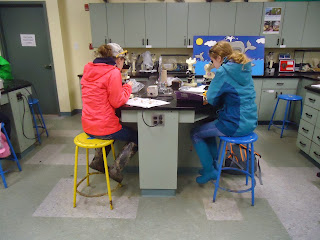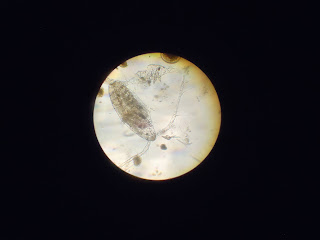Yesterday morning the Essex students headed out to explore a mixed habitat intertidal zone. They found lots of animals including sponges, green crabs, sea cucumbers, urchins, sea stars, terebellid worms, and chitons. The students also found a great diversity of fish such as rock gunnels, a lumpfish, sculpins, a sea raven, and seasnails. As the tide started to come back in we headed to the lab to study the seaweeds that we collected.
In the afternoon the group did an experiment to determine the effect of temperature on the feeding rate of barnacles. They also toured the
Atlantic Reference Centre or ARC, which is an amazing research museum filled with specimens of animals from the North Atlantic. The students were very excited to see animals from the deep sea such as angler fish, viper fish, a gulper eel, and a basket star. The tour ended with the chance to kiss a porbeagle shark head!
After supper the group headed into town for a town history scavenger hunt. I hear the prize was ice cream!
Exploring the intertidal zone.
Sea cucumber.
Looking under rocks.
Tiny sculpin.
On the hunt for different species.
Adorable lumpfish.
There were lots of little sea stars.
Back in the lab studying seaweeds.
Experimenting with barnacles.
Feeding barnacles.
Touring the ARC.
Tripod fish.
So many jars to see, so little time!
What lovely teeth you have!
Eskimo kiss for the porbeagle.























































